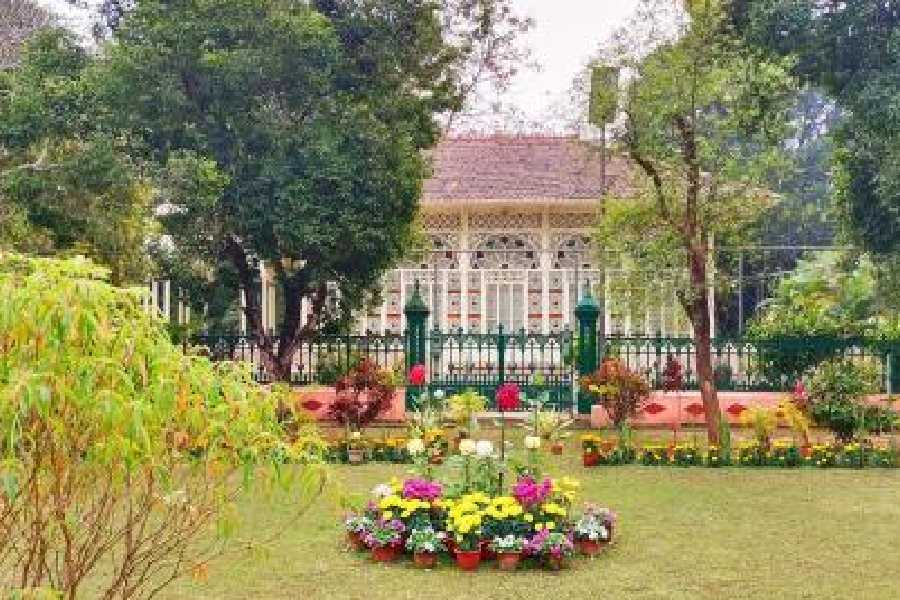Santiniketan, where Rabindranath Tagore’s world university, Visva-Bharati, is located, has been inscribed as a World Heritage Site on the Unesco World Heritage List.
The inscription was awarded at the extended 45th session of the World Heritage Committee (2023) at Riyadh, Saudi Arabia, on Sunday.
Durga Puja was included on the Unesco World Heritage List of intangible cultural heritage in 2022.
The heritage tag has been given to the core area of Santiniketan, which is made of three zones — Ashrama or Hermitage, Uttarayan, and the area with Kala Bhavana and Sangeet Bhavana.
The Unesco site states that the “boundaries of the nominated property are restricted to those areas within the Visva Bharati campus that retain the highest level of integrity and the distillation of the core essence of Santiniketan”.
The rest of the university campus of Visva-Bharati forms the buffer zone of the newly inscribed world heritage site.
The justification for including Santiniketan on the World Heritage List, Unesco says, is “the design of buildings, furniture, landscape, murals, art and sculpture in Santiniketan that is a tangible demonstration of an Asian avant-garde, representative of the early 20th century global explorations that heralded modernism.”
It also states that “Santiniketan is directly and tangibly associated with the ideas, works and vision of Rabindranath Tagore and his associates, pioneers of the Bengal School of Art and early Indian Modernism. Against the backdrop of the Partition of Bengal, Santiniketan became the crucible for the artistic and intellectual renaissance of Bengal in the early 20th century.”
“Delighted that Santiniketan, an embodiment of Gurudev Rabindranath Tagore’s vision and India’s rich cultural heritage, has been inscribed on the @UNESCO World Heritage List. This is a proud moment for all Indians,” Prime Minister Narendra Modi wrote on X (formerly Twitter).
“Glad and proud that our Santiniketan, the town of Gurudev Rabindranath Tagore, is now finally included in UNESCO’s World Heritage List. Biswa Bangla’s pride, Santiniketan was nurtured by the poet and has been supported by people of Bengal over the generations,” chief minister Mamata Banerjee, now in Spain, wrote on X.
“We from the Government of West Bengal have significantly added to its infrastructure in last 12 years and the world now recognizes the glory of the heritage place. Kudos to all who love Bengal, Tagore, and his messages of fraternity. Jai Bangla, Pranam to Gurudev.”
The Centre had applied for Santiniketan’s recognition as a World Heritage Site in 2010, when the Archeological Survey of India (ASI) approached heritage architects Abha Narain Lamba and Manish Chakrabarti to prepare the nomination dossier.
“The application did not proceed then as the core area was too large and the Unesco felt that the area marked for inclusion was not of manageable proportion,” said Chakrabarti.
When the nomination dossier was recast and resubmitted in 2021, the brief from the government was to focus on the architecture and the tangible landscape of the town, said Lamba.
“The challenge in this was it was not the tallest 20th century building here that we were advocating. Santiniketan needed a strong argument to prove its outstanding character. In the case of Santiniketan, rather than looking West, we had to look East as it was rooted in indigenous architecture, folk architecture, the paintings of Ellora...” said Lamba.
“Tagore’s visit to China and Japan and to Borobudur (in Indonesia) influenced a lot of the architecture in Santiniketan. It was a pan-Asian modernity in early 20th century in Santiniketan. We focussed on the architectural materiality of the east.”
Both Lamba and Chakrabarti were joyous at the Unesco’s announcement.
Lamba said: “A lot of people didn’t believe in Santiniketan. At a time when there was a lot of hard development in concrete going around, Tagore’s vision of sustainable building in sync with the landscape today is very significant. Gurudev’s idea of modern, sustainable, organic, craft-based architecture is relevant even today.”
While the inscription will inevitably bring a lot of focus on Santiniketan with more tourists and funds, the need of the hour is to “have an effective and better visitor management and better ways of interpreting the site,” said Lamba.
At a time when the Visva-Bharati administration is building walls, the architect said: “We dont need to have compound walls to demarcate the heritage zone as the land is linked to the existing buildings.”
Santiniketan was created by an act of Parliament, the 1951 Santiniketan Act. It was the first Centre for Excellence declared by the government of India.
The Unesco’s decision to include Santiniketan on the World Heritage List followed a recommendation from the International Council for Museums (ICOMOS).
